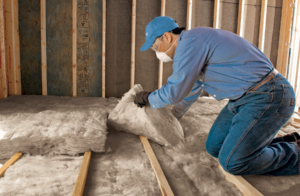Baltimore Motorcycle Accident Lawyer can help you navigate insurance claims, determine liability, and obtain compensation for your losses. Compensable damages may include financial costs, such as medical bills and lost wages, as well as non-financial costs, such as pain and suffering.
A qualified attorney will meticulously evaluate your case by gathering evidence and speaking to eyewitnesses. They will advise you on what to save and how to file your claim in accordance with state laws.

The physical and emotional trauma of a motorcycle accident can be overwhelming, leaving you facing extraordinary medical expenses, lost income from time away from work, property damage to your bike or personal belongings, and pain and suffering. A motorcycle crash lawyer can help you understand your rights and ensure that the insurance companies involved give you the compensation you deserve.
A competent motorcycle accident attorney will gather all the necessary evidence to build a strong case for you. This may include scene photos, police reports, medical records, eyewitness comments and expert witness testimony. They will also help you file all the required paperwork and make sure deadlines are met so you do not miss out on any compensation to which you may be entitled.
They will review all the facts of your case and determine who was responsible for your accident and injuries. They will use their legal knowledge and experience to negotiate with insurance companies on your behalf and, if needed, take your case to court.
Your lawyer will gather all of the evidence and compile it in the form of a demand letter to be sent to the at-fault party’s insurer. This document will enumerate the facts of the crash, provide a legal reason why that person is liable for your losses, and request compensation.
To prove negligence, your attorney will have to show that the defendant breached their duty of care in some way and that this breach caused the accident and resultant injuries. They will also have to prove that you suffered actual damages from the accident, which may include your loss of income, medical expenses, costs associated with repairing or replacing your bike, and your pain and suffering. Under New York’s comparative negligence law, if you are found to be partially responsible for the accident, your damages will diminish in proportion to your share of fault.
In many cases, multiple parties are at fault for a motorcycle crash. This includes the motorcyclist and a driver, as well as a manufacturer or other entity that is liable for selling a defective product. Your attorney will know when it is appropriate to pursue claims against multiple defendants.
Experienced
After a motorcycle accident, victims must deal with medical bills, property damage and other financial losses. Having an experienced lawyer can make the process easier and help victims get the compensation they need to recover.
Choosing the right attorney to represent you will have a significant impact on your injury claim. When interviewing potential lawyers, ask questions to find out their level of experience. They should be able to give you detailed answers and demonstrate their knowledge of personal injury law. Having extensive litigation experience is important, as it means they’re not looking to rush you through your case and settle for a lowball offer from the insurance company.
A reputable motorcycle accident lawyer will have the skillset to review all aspects of your case and file an effective lawsuit if necessary. They will also have the ability to handle any negotiations or even take your case all the way to trial if necessary. Regardless of the outcome, they will provide guidance and support every step of the way.
When working with a motorcycle accident lawyer, it’s important to choose one who is familiar with the laws and regulations in your area of practice. It’s also essential that they have a solid understanding of motorcycle accidents and related legal topics, such as negligence and causation. The ability to effectively communicate is critical, as well. This includes being able to answer your questions, return calls or emails promptly and clearly explain any new developments in your case.
An experienced motorcycle accident lawyer will be able to collect and assemble all of the evidence necessary to build a strong insurance case. This can include scene photos, accident reports, medical records, eyewitness comments and more. They will also have the ability to calculate your total losses accurately. This calculation will consider both your physical and financial losses and will help you receive the compensation you need to recover.
A seasoned attorney will also have the experience to file an appeal in the event that your claim is denied by the insurer. They will be familiar with all applicable laws and regulations regarding claims and will fight for you to receive the compensation you deserve.
Timely
Injuries from motorcycle accidents are often catastrophic and require long periods of recovery. Not only are the victims likely to face significant medical expenses, but they may also struggle to pay for living costs and additional care if they cannot work. Fortunately, an experienced lawyer can help their clients pursue maximum compensation to offset the costs of an accident.
A lawyer can assess the severity of a victim’s injuries and determine if they can qualify for punitive damages to punish a negligent party and deter others from repeating such behavior in the future. They can also explain the complexities of New York’s statutes of limitations, which apply to personal injury cases and can impact the ability to file a lawsuit.
New York’s congested, poorly designed and maintained roads are challenging for all drivers but can be especially dangerous for motorcyclists. Because the riders have less contact with the road and are a smaller, lighter vehicle, they are more susceptible to being tipped off-balance by hazards like uneven pavement, potholes and gravel on the road. Other risks include reckless driving by other motorists and lane splitting, which is when riders weave between stopped or slow-moving traffic.
In addition to seeking medical attention, a motorcycle accident lawyer can provide valuable representation through negotiations with insurance companies and in court. A skilled attorney will ensure that the insurance company is offering the full amount of compensation that a victim needs to cover their past and future medical bills, lost income, property damage, pain and suffering and more.
When choosing a Manhattan motorcycle accident lawyer, be sure to ask about their process for handling cases and what their average settlement or verdict is. Also, be sure to consider an attorney’s reputation for client satisfaction and how many years they have been in business. It’s also a good idea to talk to several different attorneys before making a final decision. This will give you a chance to evaluate their personalities and see how comfortable you feel working with them. Also, ask about their communication schedule to make sure they can fit your needs.
Dedicated
When you or someone you love has been injured or killed in a motorcycle accident, it can leave you overwhelmed and struggling to cope with the unexpected expenses related to the crash. These losses can include current and future medical bills, lost income, property damage, funeral costs, and other related expenses.
While you focus on healing physically and emotionally, a qualified motorcycle accident lawyer can handle all aspects of your insurance claim. This includes negotiating with the insurance company on your behalf and providing regular updates throughout the process. In addition, your attorney can help you understand complex insurance policies and identify potential avenues for maximizing compensation under those policies’ terms.
It is critical to have a skilled and dedicated advocate fighting on your behalf against insurers who try to minimize their payouts. The right motorcycle accident lawyer will have experience negotiating with insurance companies and will understand the tactics they use to deny victims fair settlements.
If the at-fault party’s insurance company refuses to make a reasonable offer, your lawyer can file a lawsuit on your behalf. Your attorney can prepare the necessary legal paperwork, collect evidence, and file your case before the statute of limitations expires. They can also create a strong case strategy to demonstrate your losses and ensure that you receive the maximum amount of compensation possible for your claim.
Your lawyer may also help you recover punitive damages against the responsible party. This type of damage is meant to punish the party for their actions and discourage them and others from acting recklessly. Your attorney can tell you whether your situation is eligible for this type of compensation.
Choosing the best attorney to represent you after a motorcycle accident can be challenging because of the overwhelming number of options available. It can be helpful to start by asking for recommendations from friends, family members, and fellow riders. They can provide valuable insight into their experiences and the quality of representation they received. They can also recommend an attorney they trust based on their knowledge and skills. Lastly, it is important to choose an attorney who will actually work on your case and not just pass it off to another member of their firm.








